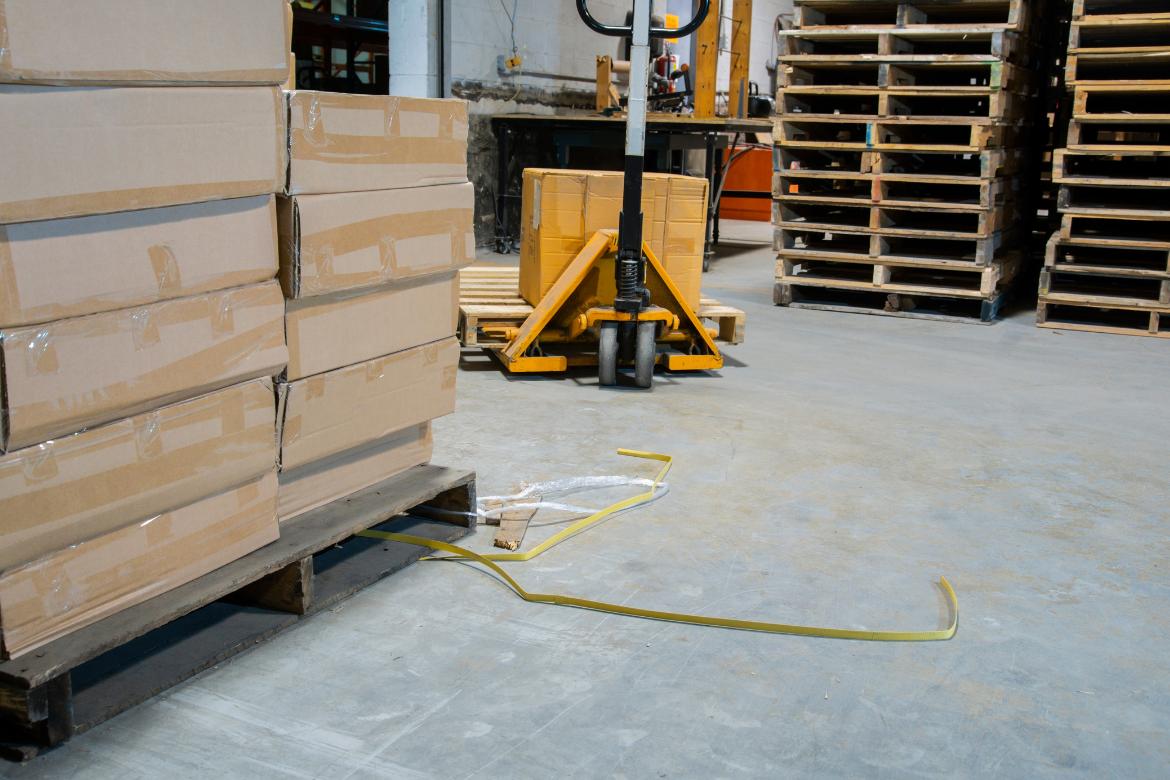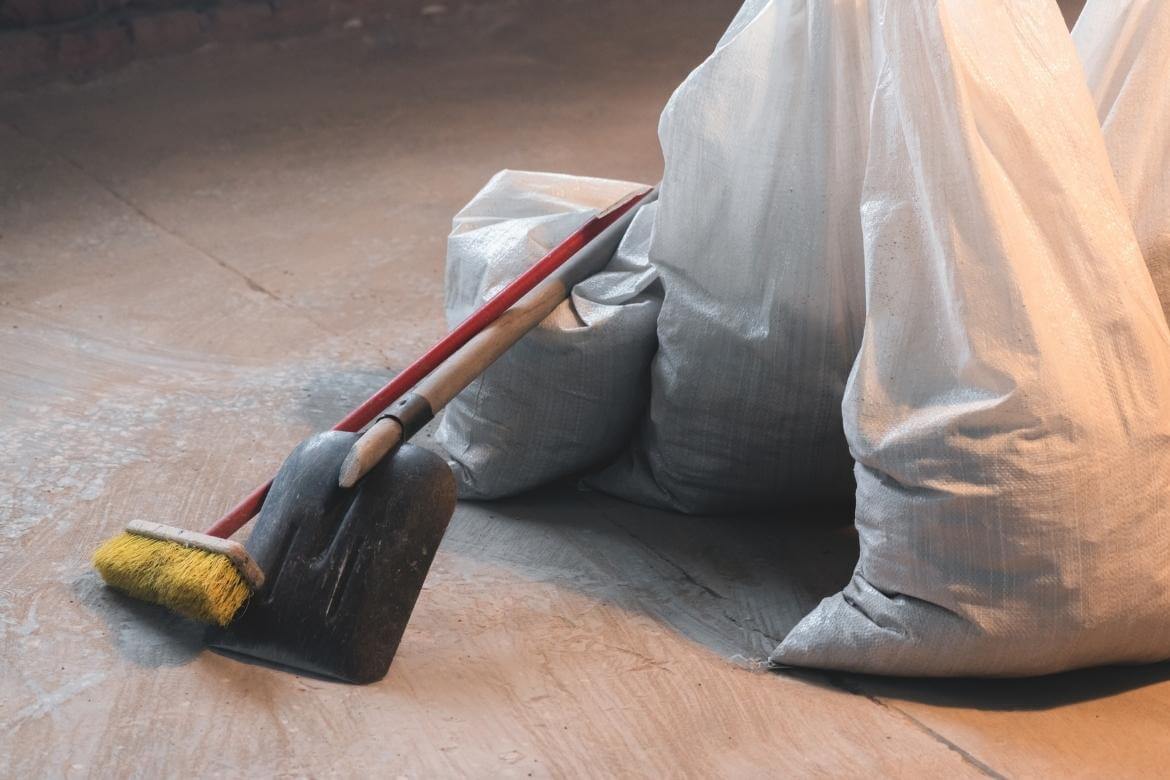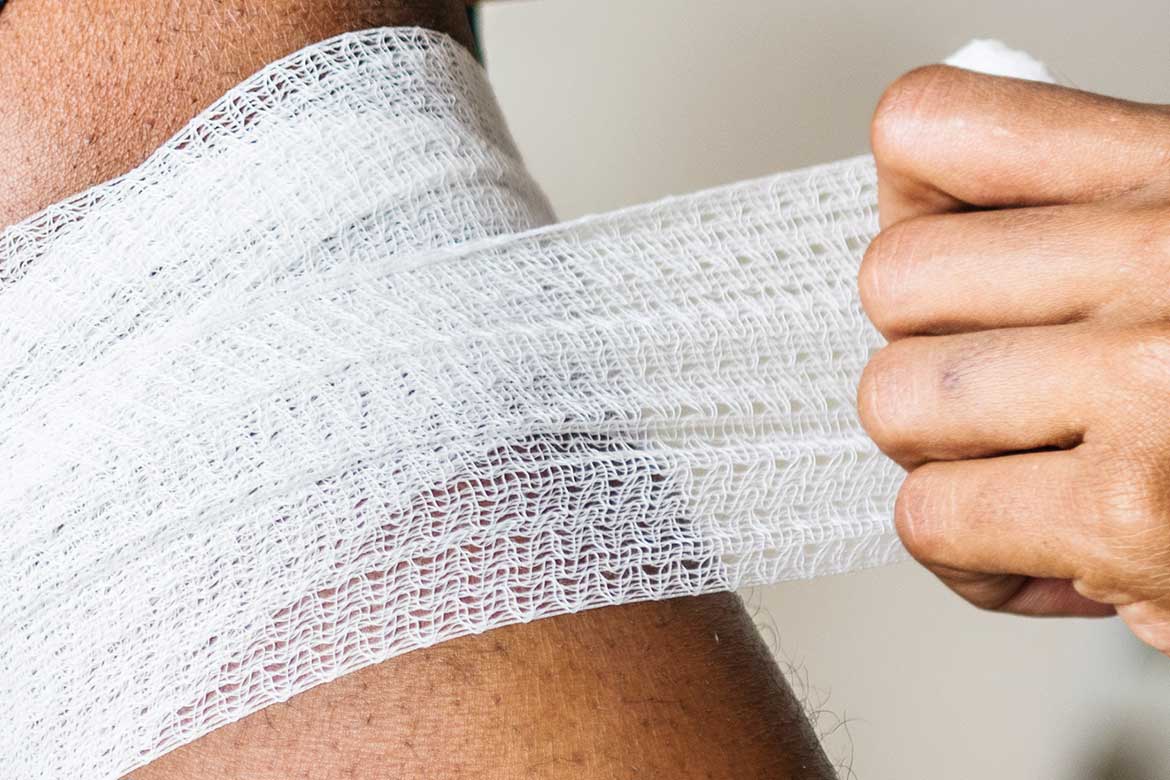25th July, 2023
14 Causes Of Slips Trips And Falls In The Workplace
Around 30% of workplace injuries are caused by slips, trips and falls on the same level. But what's causing this huge amount of accidents at work? Here are 14 causes of slips trips and falls that led to around 170,000 injuries in the UK last year.

Slips, trips and falls on the same level might not seem like a major issue. You don't have that far to fall. So apart from the obvious embarrassment if other people are watching - where's the harm?
It's estimated around 170,000 injuries in the UK in 2021/22 were from slips, trips and falls on the same level - 30% of all non-fatal injuries - according to HSE statistics. And over 18,000 of those are reported injuries.
That's more than a little embarrassment. Did you have a nice trip? No, I'm in agony. I spent 9 hours in A&E and I'll be off work for a month.
It's not just minor injuries that result from slips, trips and falls. Reported injuries are generally more serious injuries involving things like broken bones, dislocations, or more than seven days off work.
So what's causing these accidents? Here are 14 common causes of slips and trips at work:
- Wet floors
- Slippery floors
- Dusty floors
- Loose mats and floor coverings
- Unsuitable footwear
- Icy conditions
- Wet ground
- Obstacles
- Loose flooring
- Uneven flooring
- Obstructions
- Trailing cables
- Bad lighting
- Poor housekeeping
The causes of slips, trips and falls are often easy, and cheap, to fix. Simple quick actions, like cleaning up a spillage, or moving a cable, can eliminate the risk.
Removing a slip or trip hazard is often all it takes to stop the problem before someone gets hurt.
Causes of slips
Slips can be caused by a variety of things, not just the obvious spillages. Let's look at some common examples you might find in your workplace.
1. Wet floors
Wet floors can be caused by a variety of things. Spillages are an obvious culprit. Cleaning activities can also create wet floor surfaces.

When it's raining outside, entrance areas can become wet as rain travels in from people's shoes and clothing.
Poorly maintained buildings may also leak and let rain and wet weather conditions in from the outside.
2. Slippery floors
Glossy, polished floor tiles can be a slip hazard if they are used in an unsuitable place, like a bathroom or entrance, where the floor may become wet.
If footwear with smooth soles, or socks are worn, the flooring may be slippy even in dry conditions.
3. Dusty floors
It's not just liquids that can cause slips. Dusty surfaces can also create a slip hazard, preventing shoes from gripping the floor.
Some work activities like sawing wood or breaking up materials can generate loose fragments or dust that create a slippery surface on top of the floor.

4. Loose mats and floor coverings
Some mats create a slip hazard if they don't grip well with the surface underneath. Step on it in the wrong way and it can slide from under you. Ouch!
Workers might also try to temporarily protect a new floor with sheets or cardboard. If floor protection is not secured to the surface, it can also slip and slide underneath you.
5. Unsuitable footwear
Ever tried running in slippers, or socks? It's not recommended.
Shoes with a slippery sole aren't going to help you avoid slip hazards. They become one.
6. Icy conditions
Working outdoors in winter, or in cold environments?

Ice is a slippery surface, even for the most robust footwear. Make sure you consider the possibility of ice forming on surfaces causing a slip hazard.
7. Wet ground
Speaking of working outside, in wet weather the ground can become slippery, especially in grassy or muddy areas.
In autumn, wet leaves on paths can also increase the risk of slips.
Causes of trips
Now you know what to look out for when it comes to causes of slips, but what about trips? Trip hazards can happen in any type of work environment, and it's not just cables you need to look out for.
1. Obstacles
Leaving materials, tools or equipment lying around, especially in walkways, are a common cause of trips at work. You need to use tools to work, but placing a tool or material in the wrong place can be unexpected to someone else.

Packaging and waste materials are also common causes of trip hazards at work.
2. Loose flooring
So we mentioned loose mats and floor coverings can be a slip hazard. They can also be a trip hazard.
- a rug curled up at the corners
- a loose floorboard sticking up
- an unsecured tile lifting up
- a temporary floor covering
3. Uneven flooring
When you are walking along a familiar pathway, looking forward, you might not notice uneven flooring ahead of you.
Potholes, broken slabs, cracked surfaces, and uneven paving on footpaths can create trip hazards where you don't expect them.

4. Obstructions
Obstructions are like obstacles but fixed rather than temporary. Examples of obstructions include:
- low walls
- a low kerb
- floor-mounted socket covers left open
- a step
You might not realise an obstruction is there until you trip up - that's what makes it a trip hazard. And it's why you see those yellow mind-the-step signs, that you also didn't see until it was too late.
5. Trailing cables
Electricity is everywhere, or at least it feels like we need it everywhere. But unless you are using wireless equipment, you need to plug it in.
And, that cable that you use, might just get in someone else's way. Be mindful when using mobile cabled equipment, because when you're moving around, so does the cable.

6. Bad lighting
Obstacles and obstructions are worse if you can't see them. If you can't see them, you can't avoid them.
Hopefully, they won't be there to begin with, but good lighting helps identify hazards and gives you a chance to clear them away before they cause an accident.
Lighting can also be used to help highlight changes in floor level.
7. Poor housekeeping
Poor housekeeping is a leading cause of slips, trips and falls at work because if you don't clean up after yourself, you get more of those obstacles we talked about earlier.

Removing waste and cleaning up regularly can help keep your workplace free from slip and trip hazards.
Now you know the causes, it's easy to see how a quick tidy-up of spillages and obstacles can prevent many slips and trips from happening. Our simple guide to slips and trips at work can help you spot slip and trip hazards and fix them before they cause an accident.
Reducing the risk of slips, trips and falls at work is not a one-time thing. But regular housekeeping can keep you on top of those hazards.
Regular maintenance will help remove broken, loose or frayed floor coverings, and highlight when flooring needs replacing.
Highlighting changes in floor levels or surfaces, and providing handrails can also increase safety where slip and trip hazards can't be fully removed.
Keeping your workforce aware of the dangers can also help increase compliance with housekeeping practices, cleaning up spillages, removing obstacles and wearing the right footwear. Download the free slip and trip toolbox talk to help raise awareness in your workplace.
This article was written by Emma at HASpod. Emma has over 10 years experience in health and safety and BSc (Hons) Construction Management. She is NEBOSH qualified and Tech IOSH.
Better health and safety...
We are here to help you and your business put safety in everything.
Learn MoreRecent posts like this...

HSE Fee For Intervention Charges Explained
FFI stands for 'fee for intervention', which was introduced under the Health and Safety (Fees) Regulations 2012. FFI aims to recover the HSE's costs, including inspection, investigation and enforcement action, charging businesses that are in breach of health and safety regulations.
Read Post
How To Plan For Better Health And Safety At Work
If you want better health and safety, you need to plan for it. And who doesn't want to stay safer and have fewer accidents and ill health in their workplace? In this blog post, we look at how to plan for better health and safety at work.
Read Post
No Injuries, No Health And Safety Problems!?
It's been over a year since the last injury in your workplace. But just because you haven't had any accidents doesn't mean you are safe or that your health and safety performance is good. Your accident reporting system might just be hiding the truth. No injuries, no problems!? Don't count on it.
Read Post